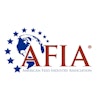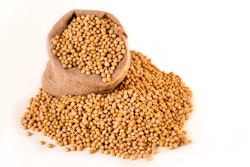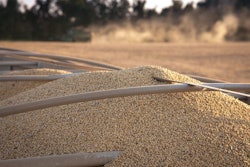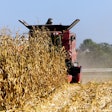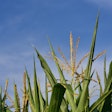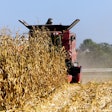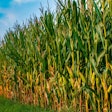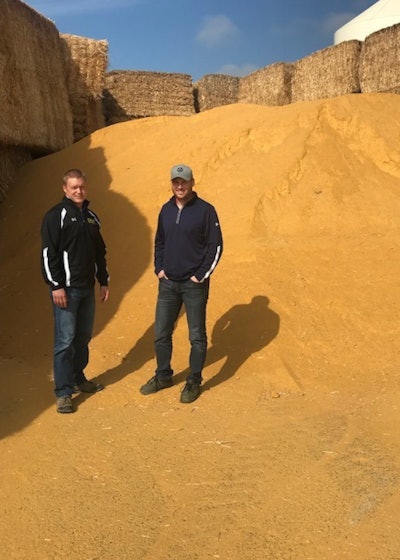
Drought conditions on the Canadian prairie have reduced harvest yields and caused more yearling cattle to move into feedlots earlier. U.S. corn and distiller’s dried grains with solubles (DDGS) can help supplement this domestic shortfall and meet increased demand for feed – as a U.S. Grains Council (USGC) mission promoted to feedyards in Alberta in September.
USGC’s team, including North Dakota corn farmer Robert Hanson and USGC consultant Tom Dowler, conducted 21 meetings over three days with buyers, brokers and cattle feeders in Alberta, representing one million head of cattle.
“The lots varied widely from calves only to finishing feeders and everything in between,” Hanson says. “These end-users are looking for a consistent, reliable supply of U.S. corn and DDGS and practical solutions to problems related to railroad timing, reliable offloading and additional investment needs.”
The marketplace for Canadian livestock feed demand is highly competitive with many alternative energy and protein feed ingredients available for producers. The 2018 Canadian harvest, however, has realized lower yields for wheat and barley, leading to less overall tonnage. Additionally, the harvest has higher quality, which is moving the limited volume available into export and food markets versus feed markets.
The United States is well-positioned to fill this domestic grain shortfall due to close geographic proximity to the U.S. market, including northern U.S. ethanol plants that offer U.S. DDGS for local feed rations, and the market access provided by the North American Free Trade Agreement (NAFTA).
Overall, Canada has purchased 1.44 million metric tons (56.7 million bushels) of U.S. corn thus far in the 2017/2018 marketing year (Sept. 2018-July 2018), more than double the previous marketing year, in addition to 605,000 tons of U.S. DDGS.
USGC continues to work with Alberta feedlots to address concerns related to challenges with Canadian rail transload and delivery and provides practical solutions to buffer these challenges.
“Alberta livestock producers have mounting concerns about feed grain availability and rising prices are putting U.S. corn into a competitive price with Canadian grain,” Dowler says. “Given that corn was widely available in Alberta last year, more cattle feeders are well aware of the opportunity to feed U.S. corn and DDGS and are becoming more knowledgeable about pricing and logistics, in large part due to the Council’s work.”
Furthermore, the same drought conditions are affecting pastures, and producers are selling yearling calves to feedlots about a month earlier than normal. The combination of these market conditions means the Council’s visit was well-timed as cattle feeders are making important decisions about grain buying for coming months.
“All indications are that U.S. corn will move into Alberta, with potentially more than one million tons required to make up for domestic shortfalls in feed grains,” Dowler said. “On the final day of the Council’s travel, more than 100,000 tons of corn traded in Southern Alberta attributed to increased awareness of the use of corn and DDGS in cattle feed rations provided by team members and downward pressure on corn prices.”
